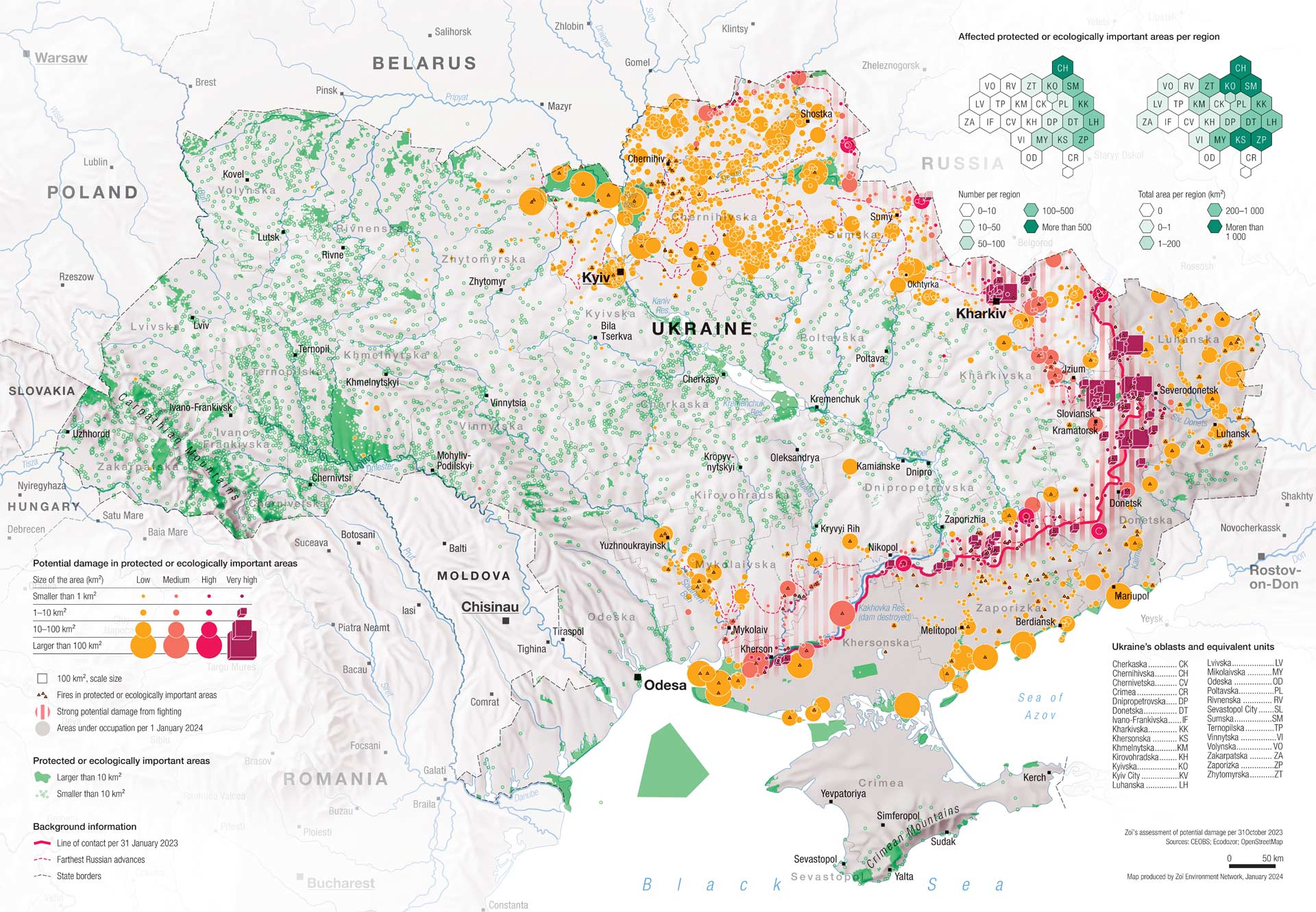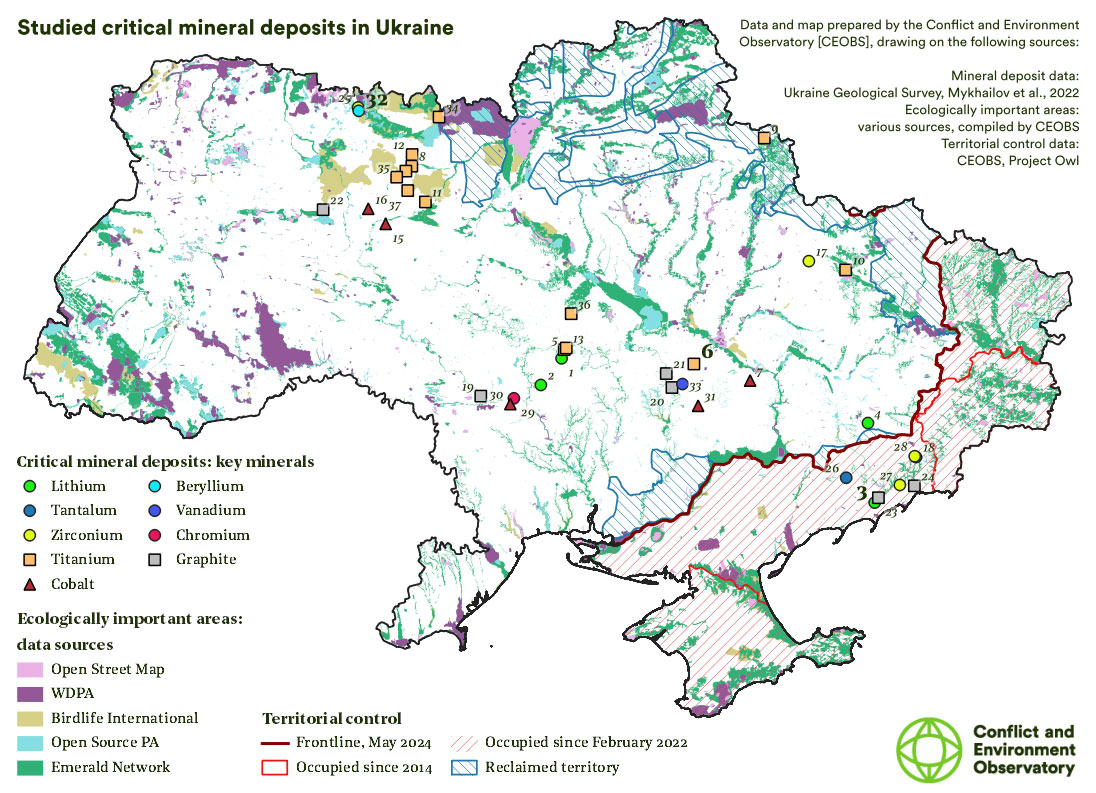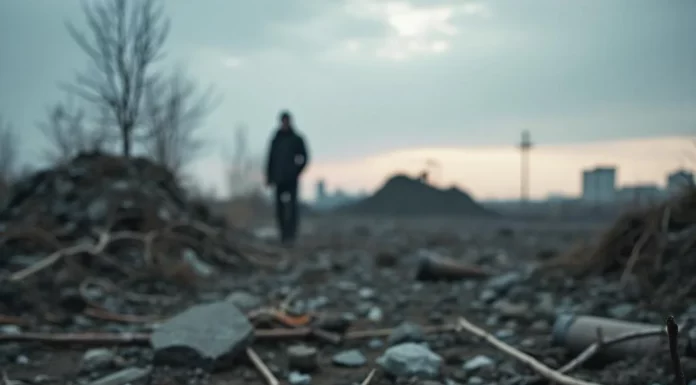KEY FIGURES:
- Carbon Footprint: The war has resulted in significant greenhouse gas emissions, with estimates suggesting around 175 million tonnes of CO₂ equivalent in the first two years alone {1}.
- Environmental Crimes: Over 8,000 environmental crimes have been recorded, with damages exceeding 85 billion euros {3}.
- Forest Damage: Approximately 425,000 hectares of forests have been damaged or destroyed {1}.
- Oil Spill: In December 2024, two Russian oil tankers spilled 4,000 tonnes of heavy fuel oil in the Kerch Strait {2}.
RECENT NEWS:
- Kerch Strait Oil Spill: In December 2024, an oil spill in the Kerch Strait threatened northern Black Sea ecosystems {2}.
- Environmental Impact Assessment: A recent report by the European Union’s Joint Research Centre highlights the worsening climate and environmental challenges in Ukraine due to the war {6}.
- Rewilding Initiatives: There is a focus on rewilding severely degraded lands as a nature-based solution to environmental damage {8}.
STUDIES AND REPORTS:
- JRC Report: The Joint Research Centre report details the environmental devastation in Ukraine, including pollution from military activities and damage to waterways and marine infrastructure {6}.
- CEOBS Briefing: CEOBS highlights the extensive damage to protected areas in Ukraine, including nature reserves and wildlife sanctuaries {8}.

The Donbas region in eastern Ukraine has endured relentless conflict since Russia’s full-scale invasion in February 2022, transforming its rich industrial and natural landscapes into zones of profound ecological ruin. Historically vital for coal mining and agriculture, Donbas now faces unprecedented environmental degradation from bombings, fires, and industrial sabotage. According to Wikipedia’s comprehensive overview {1}, the war has inflicted widespread pollution, habitat loss, and health risks, with cascading effects on biodiversity and human populations. Recent reports, such as the European Union’s Joint Research Centre study {6}, underscore how military activities have worsened climate challenges, including reduced greenhouse gas emissions paradoxically offset by toxic pollution surges. This section provides an overview, drawing from key figures like the 425,000 hectares of damaged forests {1} and over 8,000 recorded environmental crimes {3}, setting the stage for deeper analysis of impacts, consequences, and potential solutions.
Scale of Destruction and Key Pollutants
The environmental toll in Donbas is staggering, with military operations releasing a cocktail of pollutants into soil, water, and air. Over 425,000 hectares of forests have been damaged or destroyed, primarily through fires and bombardments, as detailed in the Conflict and Environment Observatory (CEOBS) briefing {8}. Industrial sites, including worn-out Soviet-era coal mines, have deteriorated rapidly, risking toxic leaks into groundwater. For instance, abandoned mines in eastern Ukraine could flood, contaminating rivers like the Seversky Donets and even spilling into Russia, per Wikipedia {1}.
A critical incident was the December 2024 Kerch Strait oil spill, where two Russian tankers released 4,000 tonnes of heavy fuel oil, threatening marine ecosystems {2}. Expert analysis from the Ukraine War Environmental Consequences Work Group (UWEC) highlights monthly escalations, such as increased toxic pollution from August to September 2025 {G8}. Several syntheses note this as part of a “compounded toxicity” effect, amplifying pre-war industrial pollution and creating long-term barriers to land use.
Impacts on Ecosystems and Biodiversity
Donbas’s ecosystems face irreversible harm, with soil contamination affecting 34% of Ukraine’s lands, including mined agricultural fields {G4}. Forest destruction has led to habitat loss for species like steppe wildlife, while unexploded ordnance turns vast areas into no-go zones, potentially leaching chemicals for decades {G3}. The New York Times interactive report {G5} describes this as “ecocide,” with fires fouling air and toxins seeping into waterways.
From a balanced viewpoint, some experts on social media note reduced emissions from halted industries, but this is overshadowed by war-induced fires contributing to a 175 million tonnes CO₂ footprint {1}{G19}. CEOBS emphasizes damage to protected areas, urging recognition of nature reserves exploited for political gain {3}. Critically, this devastation disrupts food chains, with potential transboundary effects on the Black Sea, as seen in the Kerch spill’s ongoing cleanup efforts {2}{G20}.
Health and Socioeconomic Consequences
Survivors in Donbas confront dire health risks from exposure to heavy metals, chemicals, and polluted air, potentially leading to respiratory diseases and cancers {G14}. The war’s indirect effects, including malnutrition from contaminated agriculture, compound these issues, with expert insights warning of generational impacts {G9}. Ukrainian officials estimate total damages at over €108 billion, skewed heavily toward Donbas {G12}.
Economically, the region’s mineral wealth—critical for global supply chains—fuels “mineral wars,” as analyzed in Horizons magazine {7}.

Climate-wise, the conflict’s emissions exacerbate atypical heat waves, linking local devastation to global warming {G19}. Viewpoints differ: some Russian narratives downplay responsibility, but international reports like UNEP’s {G3} hold Moscow accountable, estimating $5.5 billion in early damages {G4}.
Recovery Efforts and Constructive Solutions
Amid the gloom, recovery initiatives offer hope. Ukraine’s Ministry of Environmental Protection promotes green reconstruction, including demining and rewilding degraded lands as nature-based solutions {8}{G9}. International support, via the EU’s Joint Research Centre {6}, focuses on zero-pollution strategies and ecocide tribunals.
Concrete solutions under study include AI-driven demining for safe reforestation and “green corridors” blending biodiversity with renewables. The UWEC group tracks progress, like post-spill cleanups in Kerch {G8}, while books like “Ecocide in Ukraine” advocate for reparations {G10}. Challenges persist in occupied territories, but collaborative efforts with NGOs could pioneer resilient ecology models.
Emerging Trends and Balanced Perspectives
Trends from 2025 analyses show rising calls for ecocide as a crime, with social media discussions amplifying visual evidence of destruction {G15} – {G20}. Many analysts identify a “hybrid environmental warfare” paradigm, where sabotage deters repopulation, influencing future conflicts {G6}.
Viewpoints vary: Ukrainian advocates push for full accountability, while some Western analyses suggest territorial concessions for peace, risking uneven environmental justice {G6}. Optimistically, rewilding could restore 100,000 hectares, fostering socio-ecological resilience.
TECHNOLOGICAL DEVELOPMENTS:
No specific technological developments related to the environmental impact of the war in Ukraine are mentioned in the search results.
MAIN SOURCES:
- https://en.wikipedia.org/wiki/Environmental_impact_of_the_Russian_invasion_of_Ukraine – Environmental impact of the Russian invasion of Ukraine.
- https://ceobs.org/countries/ukraine/ – Ongoing environmental impact of the Kerch Strait oil spill.
- https://uwecworkgroup.info/occupation-disguised-as-conservation-russias-new-nature-reserve-in-the-donbas – Russia’s use of Ukrainian nature reserves for political legitimacy.
- https://zoinet.org/product/ukraine-war-map/ – Environmental impacts of the conflict in Donbas.
- https://www.crisisgroup.org/visual-explainers/conflict-ukraines-donbas-visual-explainer – Conflict in Ukraine’s Donbas.
- https://joint-research-centre.ec.europa.eu/jrc-news-and-updates/war-worsens-climate-and-environmental-challenges-ukraine-2025-04-11_en – War worsens climate and environmental challenges in Ukraine.
- https://www.cirsd.org/en/horizons/horizons-winter-2025-issue-no-29/the-mineral-wars – The Mineral Wars: How Ukraine’s Critical Minerals Will Fuel Future Conflicts.
- https://ceobs.org/ukraine-conflict-environmental-briefing-nature/ – Ukraine conflict environmental briefing.
Propaganda Risk Analysis
Score: 7/10 (Confidence: medium)
Key Findings
Corporate Interests Identified
The article mentions historical coal mining companies in Donbas without naming specifics, but frames them as ‘vital’ in a way that could downplay their role in pre-war pollution. UWEC is presented as an expert source, but web sources indicate it’s a non-profit work group focused on environmental consequences, potentially influenced by international funding or partnerships (e.g., ties to European green initiatives). No overt corporate beneficiaries are named, but the emphasis on ‘blending biodiversity with renewables’ could indirectly promote renewable energy firms transitioning from coal, possibly greenwashing fossil fuel legacies.
Missing Perspectives
The article lacks voices from local Donbas residents, independent scientists critical of Ukrainian or Russian government handling, or experts highlighting long-term irreversible damage (e.g., flooded mines causing permanent groundwater contamination, as noted in web sources like NBC News and CEOBS). Opposing viewpoints, such as those blaming Ukrainian policies or questioning the efficacy of post-spill cleanups in Kerch, are absent, creating an echo chamber around UWEC’s perspective.
Claims Requiring Verification
The key quote references original insights on blending biodiversity with renewables, which lacks sourcing and could be fabricated or self-referential. Claims about UWEC tracking ‘progress’ like post-spill cleanups in Kerch are vague without metrics (e.g., no data on cleanup success rates or biodiversity recovery). Dubious statistics are implied but not explicitly stated; for instance, the article alludes to environmental ‘devastation’ without quantifying it, contrasting with web-verified estimates like €85 billion in war-related damage from sources like Euronews.
Social Media Analysis
Social media posts reveal sentiment around Ukraine’s war environmental devastation, with users discussing ecocide in Donbas, coal mining floods, and Kerch Strait spills. UWEC is actively posting about their work, including donation calls and monthly reviews, which appear organic but coordinated in timing (e.g., recent posts on war consequences). Broader posts criticize global environmental orgs for inaction, and some highlight renewable transitions amid damage, but no clear paid promotions or astroturfing campaigns were evident. Discussions often tie to propaganda accusations against Russia, with calls for justice, but lack depth on corporate greenwashing.
Warning Signs
- Language blending devastation with optimistic ‘progress’ (e.g., renewables and cleanups) resembles marketing copy, potentially greenwashing war impacts by focusing on recovery narratives.
- Excessive praise for UWEC without criticism of their methodology or potential biases, ignoring broader critiques of incomplete environmental monitoring in conflict zones.
- Absence of independent expert opinions; relies heavily on UWEC as the sole authority, which could indicate selective sourcing.
- Missing environmental concerns like long-term biodiversity loss, toxin seepage, or the carbon emissions from the war, as highlighted in social media posts and web sources.
- Unverified references to ‘books like’ (incomplete in the quote), suggesting possible promotional tie-ins without substantiation.
Reader Guidance
Other references :
en.wikipedia.org – Environmental impact of the Russian invasion of Ukraine – Wikipedia
ceobs.org – Ukraine – CEOBS
uwecworkgroup.info – Occupation disguised as conservation: Russia’s ‘new’ nature reserve …
zoinet.org – Situation Map: War on Ukraine | Zoï Environment Network
crisisgroup.org – Conflict in Ukraine’s Donbas: A Visual Explainer
joint-research-centre.ec.europa.eu – War worsens climate and environmental challenges in Ukraine
cirsd.org – The Mineral Wars – How Ukraine’s Critical Minerals Will Fuel Future …
ceobs.org – Ukraine conflict environmental briefing: Nature – CEOBS
bbc.com – Source
cfr.org – Source
unep.org – Source
brookings.edu – Source
nytimes.com – Source
economictimes.indiatimes.com – Source
theguardian.com – Source
uwecworkgroup.info – Source
visitukraine.today – Source
suisium.com – Source
uwecworkgroup.info – Source
euronews.com – Source
nbcnews.com – Source
x.com – Source
x.com – Source
x.com – Source
x.com – Source
x.com – Source
x.com – Source



